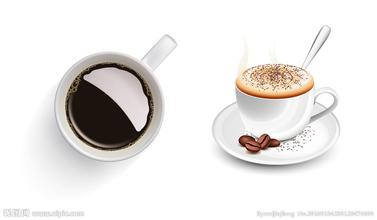Taste mellow Mexican coffee flavor Taste Manor characteristics Fine coffee beans Introduction
Water transportation, especially sea transportation, has undertaken the task of transporting some goods, domestic goods and outbound passengers in Mexico. According to the statistics of the national port system, from January to December 2013, the national freight container load reached 288 million tons of cargo, an increase of 1.6% year-on-year. Among them, the load of oil and oil derivatives alone reached 122 million tons, accounting for 42.5% of the total cargo volume; bulk mineral products accounted for 78.36 million, accounting for 27.2%; agricultural products accounted for 13.56 million tons, accounting for 4.7%. In addition, Mexico's coastal ports and international cruise ships received a total of 56710 ships in 2013, with a cumulative total of more than 9.96 million passengers. After the privatization reform in the 1990s, the port of Mexico has successfully completed modernization, and various facilities of domestic terminals have been relatively advanced. There are regular or irregular passenger and cargo liners with many countries in Europe, the United States, Central and South America and the Caribbean, the Far East, the Mediterranean region and Scandinavia. There are 198 ports and wharves of different sizes in China, including 140 seaports, 29 inland river ports and 29 inland lake wharves. According to the statistics of the Ministry of Communications and Transportation of Mexico (SCT), there are 117 seaports and wharves in Mexico. Among them, there are 58 ports and docks on the Pacific coast and 5 ports and docks in Mexico Bay and Caribbean. [3]
travel editor
Mexico is one of the ancient centers of Indian culture. The world famous Mayan culture, Toltec culture and Aztec culture were created by Mexican Indians. Mexico is located in the southern part of North America. It borders the United States to the north, Guatemala and Belize to the southeast, the Gulf of Mexico and the Caribbean Sea to the south, and the Pacific Ocean to the southwest. 5/6 of the land area is plateau and mountain, with an average altitude of about 1800 meters. There are many islands along the coast. Among them, there are the islands of Revilla, Guadalupe, Cedros and Tres Marias in the Pacific Ocean, Tiburon and Angel de Guada in the Gulf of California, and Murray and Cozumel in the Caribbean Sea.
Mayan monuments
Mayan monuments in Mexico
Mayan monuments of Mexico (20 photos)
Chichen Itza Mayan city-state ruins was the largest and most prosperous city-state of the ancient Mayan Empire. The site is located in the middle of the Yucatan Peninsula. It was founded in 514 AD. The main monuments of the city-state are: the Square of a Thousand Pillars, which once supported the huge domed roof. You can see how big this building is. Samurai temple and two reclining statues of gods in front of the temple. The nine-story, 30-meter-high stepped pyramid of Kukurkan. And holy wells (limestone vertical holes) and built on the high platform was a snail-shaped ancient Mayan astronomical observatory, known as the "snail platform."
But with a climate suitable for coffee growing, excellent coffee varieties, excellent soil and high altitude growing areas, why is Mexico's coffee quality unsatisfactory?
A few days ago, when I rushed to Mexico, some colleagues called Mexico popcorn coffee. The quality of raw beans exported from Mexico before was not good. Sometimes, the raw beans bought were mixed with a little corn and sand. If the corn is not sorted and mixed with raw beans and sent to the roaster, it will really become popcorn. But the quality of Mexico's exports of raw beans has improved greatly, and the adulteration of corn kernels has been a story many years ago. Corn was bred by the ancient Indians of Mexico, so Mexico is known as the "hometown of corn", corn is also Mexico's main crop. The coffee wasn't processed well enough in the drying process to get mixed into the corn kernels. That would explain why it was corn. It is not difficult to find out from this matter that the root cause of the unsatisfactory overall quality of Mexican coffee lies in the subsequent production and treatment links. From coffee fruit harvesting, processing, grading, packaging and transportation, unreasonable operation will lead to the loss of good flavor.
Mexicans are enthusiastic and optimistic, and the chocolate in Mexican coffee perfectly reflects this. Mexican coffee has different recipes, but the main difference is whether it contains alcohol or not. We will first introduce the non-alcoholic recipe.
Heat a cup of milk, a teaspoon of cinnamon powder and a teaspoon of vanilla powder in a saucepan. Keep the heat medium, not too high. Make sure the milk doesn't boil. Then add cocoa powder, dissolve well and stir well. If you love chocolate, you can use chocolate paste instead of cocoa powder and milk mix.
Allow the milk to cool for about 5 minutes before pouring into the coffee. Garnish the coffee with cold cream and a cinnamon stick.
Chocolate and cinnamon aromas blend together to give off a desert flavor. Tasting a cup of coffee like this, you're walking through the grey-green cacti of the Mexican desert. It's a fun experience.

Important Notice :
前街咖啡 FrontStreet Coffee has moved to new addredd:
FrontStreet Coffee Address: 315,Donghua East Road,GuangZhou
Tel:020 38364473
- Prev

Introduction to the characteristics of Costa Rican Yerzaro Coffee Flavor Manor
It is called the legislative assembly, the unicameral system, the barber assembly, the exercise of legislative power and other important functions and powers. major government decisions need to be examined and approved by the legislative assembly, which is called the first power of the state. it is the highest legislature in the country, composed of 57 members. Members are directly elected by voters for a term of four years and are non-re-elected. The current legislative assembly was formed in May 2010, of which the new session was established on February 2, 2014.
- Next

Aromatic and mild Salvadoran Himalayan coffee Flavor Taste Manor Features
Bahia culture originated from African slave culture, and African traditional music, dance, art, food and living habits can be found and seen in Bahia. In the squares of El Salvador, black women are often seen braiding small braids for non-black girls. Some blacks are selling accessories, musical instruments and blankets that black people like.
Related
- Detailed explanation of Jadeite planting Land in Panamanian Jadeite Manor introduction to the grading system of Jadeite competitive bidding, Red bid, Green bid and Rose Summer
- Story of Coffee planting in Brenka region of Costa Rica Stonehenge Manor anaerobic heavy honey treatment of flavor mouth
- What's on the barrel of Blue Mountain Coffee beans?
- Can American coffee also pull flowers? How to use hot American style to pull out a good-looking pattern?
- Can you make a cold extract with coffee beans? What is the right proportion for cold-extracted coffee formula?
- Indonesian PWN Gold Mandrine Coffee Origin Features Flavor How to Chong? Mandolin coffee is American.
- A brief introduction to the flavor characteristics of Brazilian yellow bourbon coffee beans
- What is the effect of different water quality on the flavor of cold-extracted coffee? What kind of water is best for brewing coffee?
- Why do you think of Rose Summer whenever you mention Panamanian coffee?
- Introduction to the characteristics of authentic blue mountain coffee bean producing areas? What is the CIB Coffee Authority in Jamaica?

